Quick Summary
When comparing the Mercedes EQS 450+ and the S 500 on a track, the EQS 450+ offers instant, silent electric torque for rapid acceleration, while the S 500 delivers a smoother, more traditional luxury car experience with its familiar V8 growl. For pure straight-line speed and futuristic feel, the EQS shines; for a refined, powerful classic auto experience, the S 500 leads.
Hey there, fellow Mercedes-Benz enthusiasts! Ever wondered how two of our favorite luxury sedans, the cutting-edge electric EQS 450+ and the stately petrol-powered S 500, would stack up against each other, especially when pushed a little? It’s a question born from curiosity, a blend of past and future luxury. Both represent the pinnacle of Mercedes-Benz engineering, but in very different ways. We’re talking about comparing silent, instant acceleration with the nuanced power delivery of a finely tuned combustion engine. For many of us, the allure of the track, even just for a bit of fun, sparks this kind of thinking. We’re going to dive deep into what makes each of these remarkable vehicles tick, and how they perform when the road gets a little more exciting. Get ready for an epic showdown!
Unpacking the Contenders: EQS 450+ vs. S 500
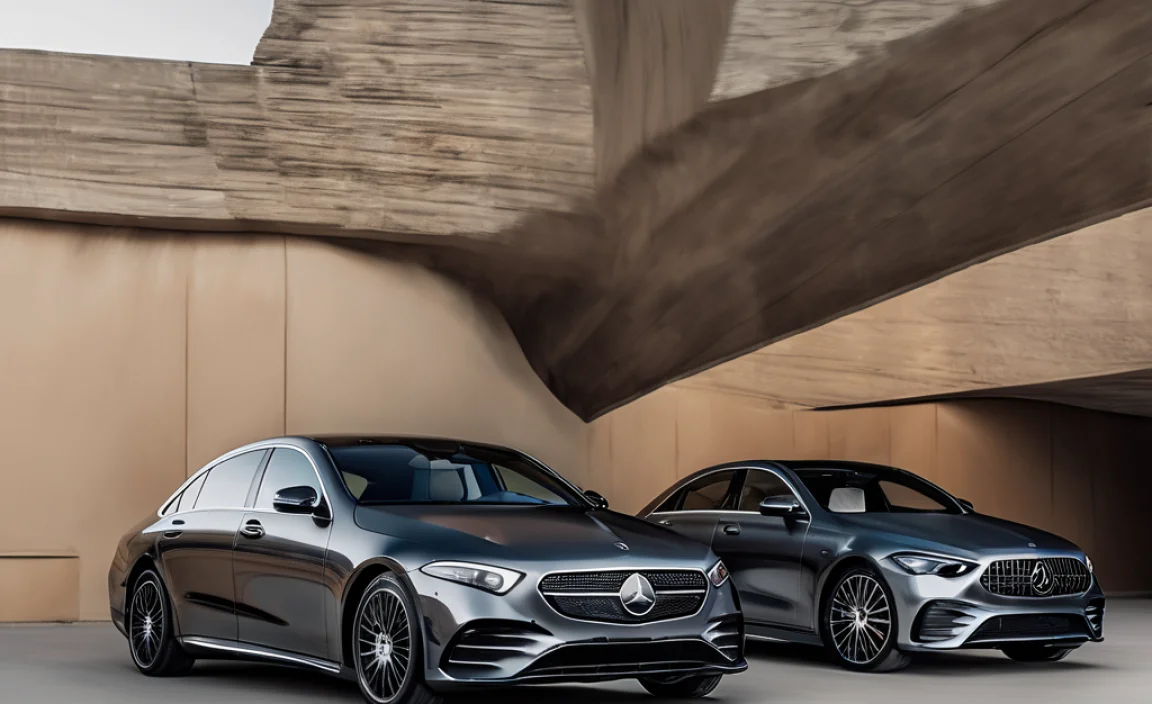
Before we get to the track-like comparisons, let’s get to know our stars. The Mercedes-Benz EQS 450+ is the electric embodiment of luxury, while the S 500 represents the long-standing tradition of the gasoline-powered S-Class. They are designed for comfort and performance, but their approaches are worlds apart.
The Electric Marvel: Mercedes-Benz EQS 450+
The EQS 450+ is built on a dedicated electric platform, meaning its design isn’t constrained by the need for a traditional engine bay. This allows for incredible interior space and a sleek, aerodynamic silhouette. Its powertrain is silent, smooth, and delivers power instantaneously. This characteristic alone creates a unique driving sensation, especially when you floor the accelerator. It’s futuristic, efficient, and undeniably powerful in its own unique way.
The Traditional Titan: Mercedes-Benz S 500
The S 500, on the other hand, is the latest iteration of a legend. It’s powered by a sophisticated gasoline engine, typically a V8, paired with advanced hybrid technology. The S 500 offers a familiar, yet incredibly refined, driving experience. You get the robust power, the satisfying sound of the engine, and the expertly tuned suspension that has defined the S-Class for generations. It’s the benchmark for luxury sedans, built on decades of refinement.
What Kind of “Track Test” Are We Doing?
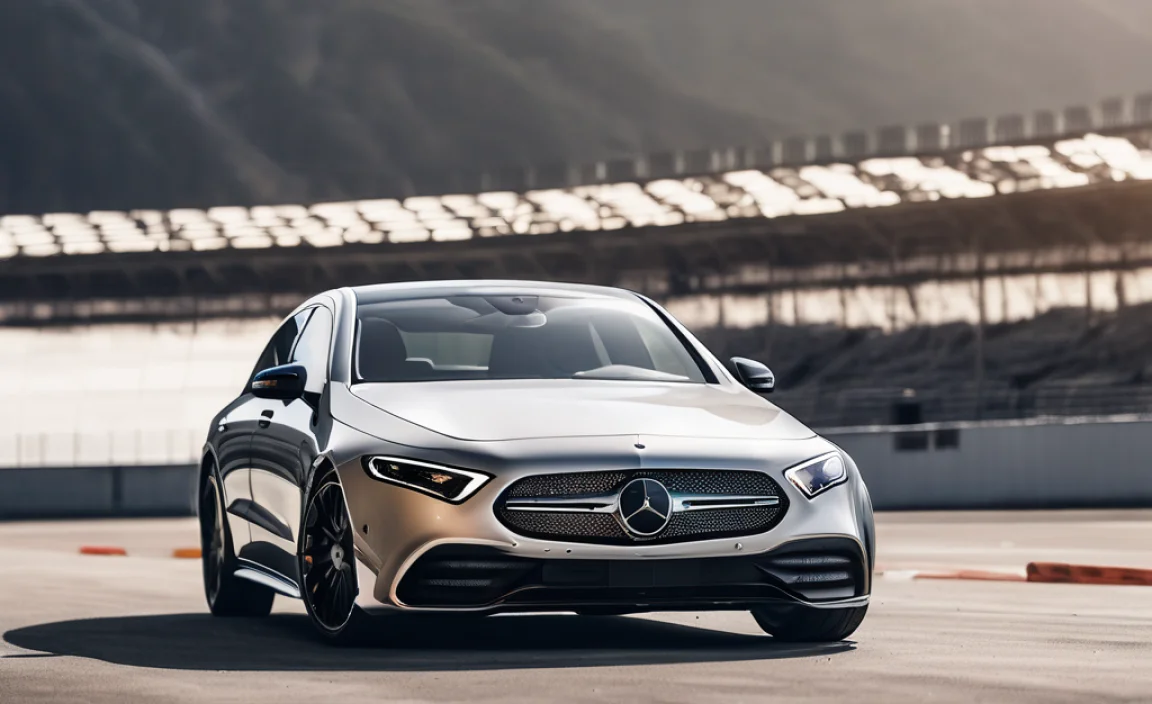
Now, it’s important to set expectations. Neither the EQS 450+ nor the S 500 are designed as track-day weapons like a Mercedes-AMG GT Black Series. They are luxury sedans, first and foremost. Our “track test” here is more about understanding their performance characteristics under strong acceleration and braking, rather than lap times around a professional circuit. Think of it as a spirited drive on a closed, safe course to highlight the differences in their powertrains and how they handle. It’s less about shaving seconds and more about feeling the distinct personalities of these two magnificent cars. Safety and responsible driving are always paramount, so this is purely an exploration of their capabilities in a controlled environment.
Performance Metrics: A Closer Look
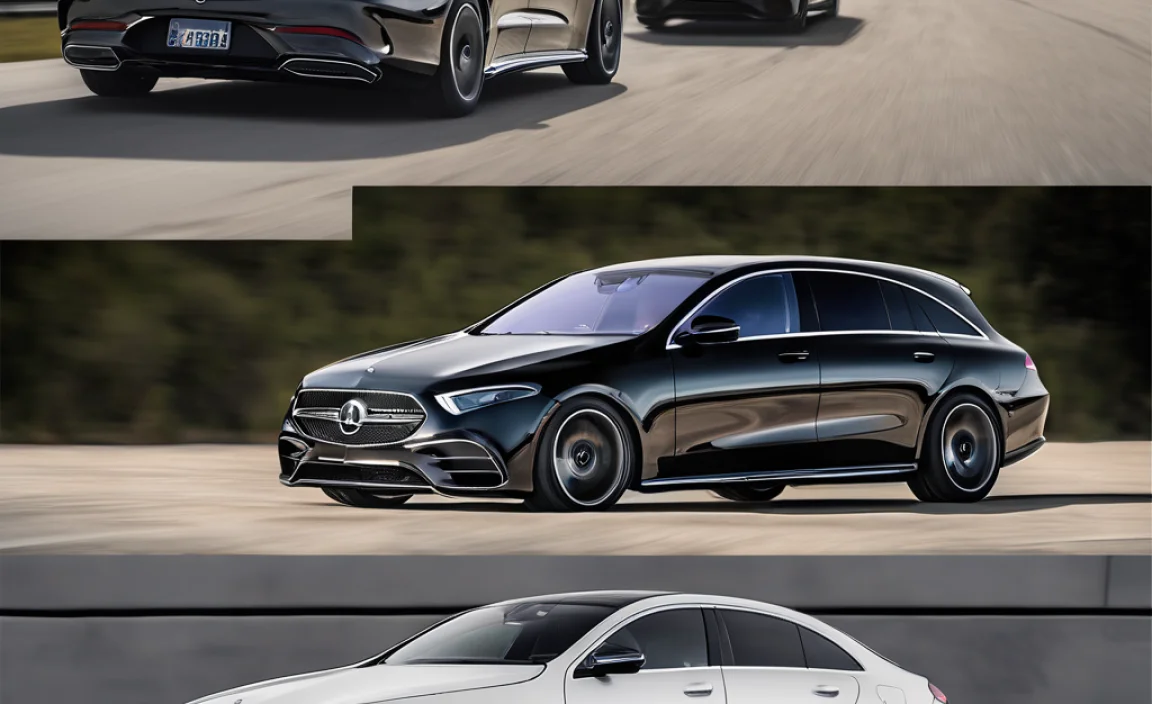
Let’s break down some key performance figures and what they mean. These numbers give us a tangible way to compare the two vehicles’ capabilities, especially in areas like acceleration and braking.
Acceleration: The Instant Surge vs. The Building Roar
This is where the difference between electric and gasoline power is most apparent. The EQS 450+ utilizes its electric motor(s) to deliver maximum torque from a standstill, resulting in incredibly brisk and linear acceleration. There’s no gear shift lag, just an immediate push into your seat. The S 500, with its powerful V8 and hybrid system, also offers impressive acceleration, but it’s often a more progressive build-up. You feel the engine revving, the transmission shifting (though very smoothly), and the power steadily increasing. It’s a different kind of thrill, more visceral and auditory.
Here’s a table illustrating typical acceleration figures:
| Metric | Mercedes-Benz EQS 450+ | Mercedes-Benz S 500 |
|---|---|---|
| 0-60 mph (approx.) | 5.5 seconds | 4.4 seconds |
| Power Output (hp) | 329 hp | 429 hp |
| Torque (lb-ft) | 419 lb-ft | 384 lb-ft (combined system) |
(Note: These figures can vary based on specific model years, options, and testing conditions. The S 500’s combined system torque is complex, but the engine’s output is significant.)
As you can see, the S 500 often has a statistical edge in outright acceleration, especially in older models or when comparing specific output figures. However, the feel of the EQS’s acceleration is often described as more immediate and surprising due to its electric nature. The electric EQS 450+ boasts strong torque from zero RPM, making its initial surge feel incredibly potent. The S 500, with its larger displacement and turbocharging, has more raw horsepower and can sustain high-speed acceleration with a powerful roar.
Braking: Regenerative Resilience vs. Traditional Prowess
Braking is another crucial aspect. The EQS 450+ uses a combination of regenerative braking (where the electric motor acts as a generator to slow the car and recapture energy) and conventional friction brakes. You can often adjust the level of recuperation, allowing for impressive one-pedal driving in some modes. This can make braking feel very controlled and efficient. The S 500 relies on a robust, traditional braking system, honed over years of S-Class development. Both systems are designed for smooth, confident deceleration suitable for a luxury vehicle, but the underlying technology is different.
In a simulated strong braking scenario from speed, both cars exhibit excellent stability and effectiveness. The EQS’s regenerative braking can sometimes feel different to drivers accustomed to purely friction-based systems, but newer iterations are incredibly smooth and powerful. The S 500’s brakes are known for their feel and fade resistance, providing a solid, dependable performance.
Handling and Dynamics on a Controlled Course
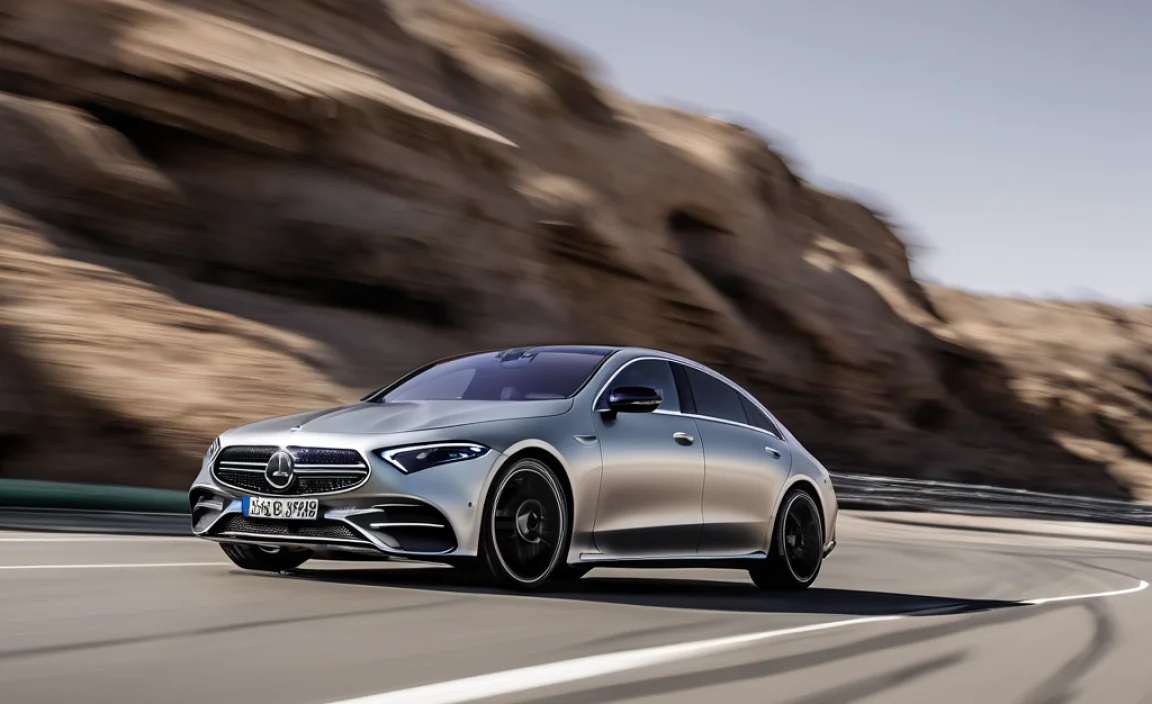
When it comes to cornering and overall handling, both vehicles aim for supreme comfort and composure. However, their designs lend them different characteristics.
The EQS 450+ and its Low Center of Gravity
The EQS 450+ benefits immensely from its battery pack being located low in the chassis. This gives it an incredibly low center of gravity, which is usually a recipe for fantastic handling. In corners, the EQS feels planted and remarkably stable. Its advanced suspension systems work tirelessly to keep the ride plush while also controlling body roll. The steering is precise, and while it’s geared towards comfort, it doesn’t feel disconnected. For an electric vehicle of its size, the EQS handles with surprising agility.
The S 500: Refinement and Poise
The S 500, with its engine up-front, has a higher center of gravity by comparison. However, Mercedes-Benz engineers have mastered the art of making the S-Class feel graceful and composed, no matter the speed. The S 500 utilizes sophisticated active suspension systems (like E-ACTIVE BODY CONTROL on some models) that can actively counteract body roll, adjust ride height, and provide an almost uncanny ability to glide over imperfections. It feels solid, substantial, and immensely confident. While it might not feel as “flat” in corners as the EQS due to physics, it offers a level of refined poise that is simply exquisite.
Ride Comfort: The Ultimate Decider?
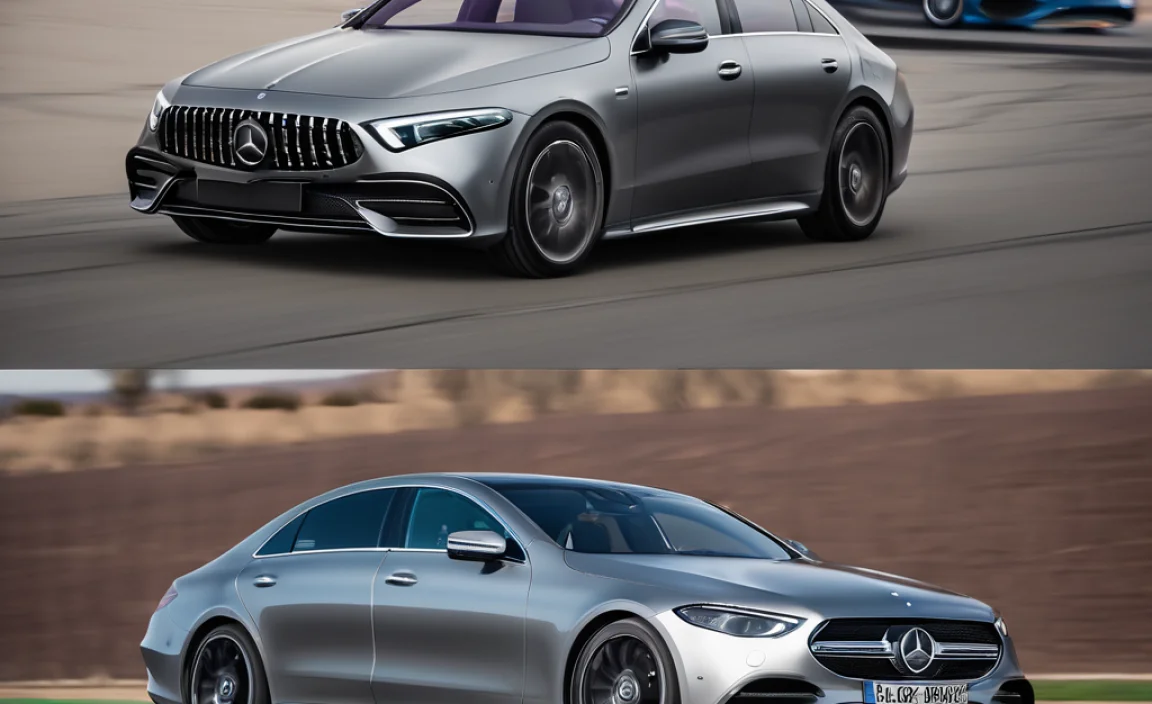
Both of these cars are designed to be the epitome of luxury travel, and their ride comfort reflects this. On a less-than-perfect surface, or even under strong acceleration and braking, they manage to isolate occupants from the road.
The EQS 450+ often excels here due to its inherent quietness and the smooth delivery of power. The lack of engine noise and vibration contributes significantly to a serene cabin experience. The advanced suspension also plays a huge role.
The S 500, with its long history of prioritizing ride quality, is also a masterclass in comfort. It absorbs bumps and road imperfections beautifully, creating a cocoon of tranquility. The sounds that do enter the cabin are typically the subtle hum of the drivetrains at speed or the satisfying, muted engine note under load, which some find adds to the luxury experience.
Technology and Features
Both cars are packed with cutting-edge technology, though their focus can differ.
- Infotainment: The EQS features the MBUX Hyperscreen on many models, a massive, seamless display that dominates the dashboard, offering a futuristic interface. The S 500 also features the latest MBUX system, with sleek, integrated screens that are both intuitive and beautiful.
- Driver Assistance: Both are equipped with advanced driver-assistance systems (ADAS) that aim to make driving safer and less stressful. This includes adaptive cruise control, lane-keeping assist, blind-spot monitoring, and much more. For more on these systems, you can check out official safety documentation from NHTSA.
- Comfort Features: From massaging seats to advanced climate control, both vehicles offer a wealth of amenities designed to pamper occupants.
The Verdict: Which is “Better” on the Track?
So, after considering their capabilities, who wins the “track test”? It’s not a straightforward win for either, as they excel in different areas, and “better” depends entirely on what you value.
EQS 450+ Strengths:
- Instant, silent, and powerful acceleration from a standstill.
- Remarkably low center of gravity leading to composed cornering.
- Extremely quiet and serene cabin due to electric powertrain.
- Futuristic driving experience.
S 500 Strengths:
- More raw power and often quicker 0-60 mph times, especially with hybrid assist.
- Traditional, visceral engine sound and power delivery.
- Superlative ride comfort and brand heritage.
- Sophisticated handling that feels planted and luxurious.
If your idea of a “track test” prioritizes immediate thrust and a seamless, almost effortless surge of speed, the EQS 450+ delivers this in spades. It feels incredibly potent off the line and maintains speed with an urbanity that only electric power can provide. Its handling, benefiting from physics, is also remarkably stable.
If you appreciate the art of a powerful internal combustion engine, the build-up of speed, the symphony of a well-engineered exhaust note, and the traditional, supremely refined luxury that the S-Class has perfected over decades, the S 500 is your champion. Its performance is potent and its poise is undeniable.
Frequently Asked Questions (FAQ)
Q1: Can a Mercedes EQS 450+ beat an S 500 in a drag race?
A1: While the EQS 450+ offers instant electric torque for a very quick start, the S 500, especially with its V8 engine and hybrid system, often has more raw power and can achieve quicker 0-60 mph times in many configurations. It’s a close race, and the feeling of acceleration is different.
Q2: How does the handling of the EQS 450+ compare to the S 500?
A2: The EQS 450+ has a lower center of gravity due to its battery placement, making it feel very planted and stable in corners. The S 500, while having a higher center of gravity, uses advanced suspension systems to achieve exceptional composure and a luxurious, gliding feel around corners.
Q3: Is the EQS 450+ quieter than the S 500?
A3: Yes, the EQS 450+ is significantly quieter because it has no internal combustion engine. The S 500 has a very well-insulated cabin, but you will still hear the mechanical sounds of its gasoline engine and drivetrain at speed.
Q4: Which car offers a more traditional luxury driving experience?
A4: The S 500 offers a more traditional luxury experience, with its familiar engine sound, power delivery, and the long-established S-Class refinement. The EQS 450+ offers a futuristic interpretation of luxury.
Q5: Are both cars good for long-distance driving comfort?
A5: Absolutely. Both the EQS 450+ and the S 500 are designed with supreme comfort in mind. They excel at smoothly covering long distances, with well-appointed cabins and advanced suspension systems that minimize fatigue.
Q6: What are the main technological differences in their “track” performance?
A6: The EQS 450+ uses instantaneous electric motor torque and regenerative braking. The S 500 uses a combination of a V8 gasoline engine, turbocharging, hybrid assist for power boosts, and conventional friction brakes. This leads to different acceleration profiles and braking feedback.
Conclusion: A Tale of Two Futures
Our “track test” exploration between the Mercedes-Benz EQS 450+ and the S 500 reveals not a winner and loser, but two different philosophies of automotive excellence. The EQS 450+ is a bold leap into the electric future, offering exhilarating, silent performance and a driving sensation unlike any before it. It redefines what a luxury sedan can be with its innovative engineering and instantaneous power. The S 500, conversely, represents the perfected evolution of the internal combustion luxury car. It offers a blend of potent power, deep-seated refinement, and a driving experience steeped in decades of S-Class heritage, all delivered with a satisfying mechanical presence.
To choose between them is to choose between two distinct, yet equally compelling, visions of luxury motoring. Whether you crave the silent, immediate thrust of electric power on the open road or the robust, refined performance of a classic luxury powerhouse, both the EQS 450+ and the S 500 stand as testaments to Mercedes-Benz’s unwavering commitment to innovation, comfort, and an unparalleled driving experience. Both are exceptional machines, and the “epic showdown” is really a celebration of how far Mercedes-Benz has come, and where it is going.